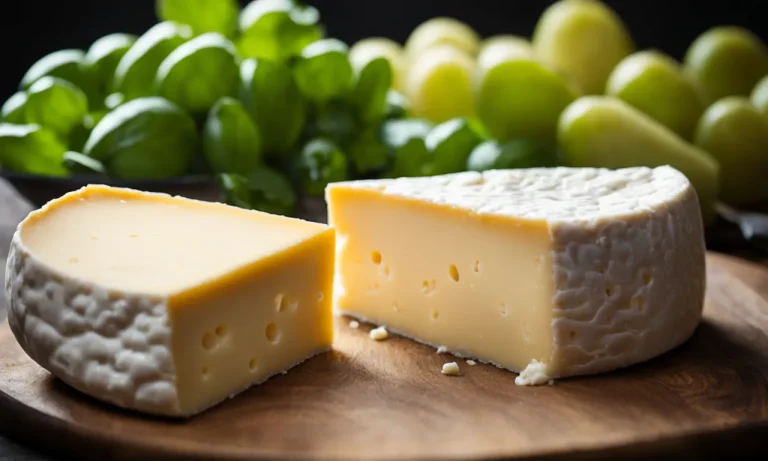Is Red 3 Vegan? Examining The Origins And Uses Of This Controversial Food Dye
Red 3, also known as erythrosine, is a pink or red food coloring that is commonly used to dye foods ranging from candies to popsicles to cake decorations. But is this vivid additive actually vegan? With conflicting information circulating, many vegans and vegetarians want a clear answer.
If you’re short on time, here’s a quick answer: Red 3 is generally not considered vegan. While the dye can be synthetically produced, most Red 3 used in food products today is derived from animal sources like fish and insects.
What is Red 3 and How is it Made?
Overview of Red 3 dye
Red 3, also known as Erythrosine B, is a synthetic food dye commonly used to add a vibrant red color to various food and beverage products. It falls under the category of azo dyes, which are compounds derived from petroleum.
Red 3 has been approved for use by regulatory bodies such as the Food and Drug Administration (FDA) in the United States and the European Food Safety Authority (EFSA) in Europe.
Natural vs synthetic manufacturing
Red 3 can be manufactured using both natural and synthetic methods. Natural sources for red dye include cochineal insects and certain plants, such as beetroot. However, the synthetic manufacturing process is more commonly used due to its cost-effectiveness and efficiency.
Main production methods
There are two main production methods for synthetic Red 3 dye: the diazotization-coupling method and the sulfonation method. In the diazotization-coupling method, aromatic compounds are combined with a diazonium salt to produce the desired dye.
On the other hand, the sulfonation method involves the reaction of an aromatic compound with sulfuric acid to form the dye.
It is important to note that the manufacturing process of Red 3, as well as other food dyes, is closely regulated to ensure safety and purity. Extensive testing and quality control measures are implemented to meet the standards set by regulatory agencies.
While Red 3 is widely used in the food industry, its safety has been a topic of controversy. Some studies have suggested a potential link between Red 3 consumption and adverse health effects, such as allergies and hyperactivity in children.
However, more research is needed to establish a definitive connection.
For more information on Red 3 and its manufacturing process, you can visit the website of the FDA at www.fda.gov or the EFSA at www.efsa.europa.eu.
Animal-Derived Sources Used to Make Red 3
Carmine dye from cochineal insects
One of the main sources for Red 3 dye is carmine, which is derived from cochineal insects. These insects are native to South America and are commonly found on cacti. The dye is extracted from the female cochineal insects by crushing them and then boiling them in water.
The resulting liquid is then processed to obtain the red dye. This process has been used for centuries and is still widely used today in the food industry.
Fish scales and shellfish
In addition to cochineal insects, fish scales and shellfish can also be used to produce Red 3 dye. The scales of certain fish, such as herring, can be processed to extract the dye. Similarly, shellfish like shrimp or lobster can also provide a source for this dye.
These animal-derived sources are often used as alternatives to carmine, especially in cases where customers prefer vegan or vegetarian options.
Other animal-based sources
While cochineal insects, fish scales, and shellfish are the primary animal-derived sources for Red 3 dye, there may be other potential sources as well. However, it is important to note that the use of these alternative sources may vary depending on the specific manufacturer or supplier.
It is always recommended to check the product labels or contact the manufacturer directly for more information on the origin of Red 3 dye.
For more information on food dyes and their sources, you can visit the FDA website, where you can find detailed information on the approved uses and safety regulations of food dyes.
Vegan Status Among Other Food Dyes
When it comes to determining whether a food dye is vegan or not, it’s important to consider the source of the dye. Red 3, also known as Erythrosine, has been a subject of controversy among vegans due to its origins and uses.
To understand its vegan status, it’s helpful to compare it with other food dyes.
Colors approved for vegan products
There are several food dyes that are commonly used in vegan products. These dyes are derived from plant-based sources and do not involve any animal products or by-products. Examples of such dyes include:
- Annatto extract, which is obtained from the seeds of the achiote tree
- Turmeric, a yellow spice derived from the Curcuma longa plant
- Spirulina extract, a blue-green pigment derived from blue-green algae
These plant-based dyes are often used in a variety of vegan foods, including plant-based meats, dairy alternatives, and confectioneries.
Other animal-derived food dyes
In contrast to the vegan-approved food dyes, there are several food dyes that are derived from animal sources. These dyes are not suitable for vegans due to the involvement of animal products in their production. Examples of animal-derived food dyes include:
- Cochineal extract, also known as carmine, which is derived from crushed cochineal insects
- Shellac, a resin secreted by the female lac bug
- Beetle juice, which is obtained from the Dactylopius coccus insect
These animal-derived dyes are commonly used in various food and beverage products, including candies, fruit juices, and cosmetics.
Natural vegetable-based colors
When it comes to the origins of Red 3, it is not derived from animal sources. Instead, it is a synthetic dye that is made from coal tar. However, this does not necessarily make it vegan-friendly. Some vegans choose to avoid Red 3 due to concerns about its potential health effects and the fact that it is not derived from natural vegetable sources.
It’s important to note that the vegan status of Red 3 may vary depending on individual beliefs and dietary choices. If you’re unsure about whether a particular food dye is vegan, it’s always a good idea to check the ingredient list or contact the manufacturer for more information.
For more information on vegan food dyes and their origins, you can visit websites like vegan.com or vegansociety.com.
Potential Health and Environmental Impacts
Studies on toxicity and cancer
There have been concerns about the potential health effects of Red 3, a commonly used food dye. Several studies have indicated that Red 3 may have carcinogenic properties and could increase the risk of cancer.
However, it is important to note that the evidence is not conclusive, and more research is needed to fully understand the impact of this food dye on human health.
Hyperactivity in children
Some studies have also suggested a link between Red 3 and hyperactivity in children. Although the evidence is limited and conflicting, some parents and experts believe that consuming foods containing Red 3 may contribute to increased hyperactivity levels in children.
It is essential to consider individual sensitivities and consult with healthcare professionals before making any dietary changes.
Synthetic dyes and pollution
Another aspect of concern regarding Red 3 and other synthetic food dyes is their potential impact on the environment. The manufacturing process of these dyes often involves the use of petrochemicals and other synthetic compounds, which can contribute to pollution and harm ecosystems.
Additionally, the disposal of food products containing these dyes can further contribute to environmental pollution.
It is worth noting that there are ongoing efforts to develop natural alternatives to synthetic food dyes, which may have fewer environmental impacts. Some companies have started using plant-based alternatives, such as beet juice or spirulina extract, to achieve vibrant colors in food products.
These natural alternatives offer a more sustainable and eco-friendly option for food coloring.
Seeking Vegan-Friendly Foods Free of Red 3
For individuals following a vegan lifestyle, it is important to be mindful of the ingredients in the foods they consume. One ingredient that often raises questions is Red 3, a food dye that has been the subject of controversy.
While it is not inherently non-vegan, many vegans choose to avoid it due to its origins and potential health concerns. To help you navigate this issue, here are some tips on finding vegan-friendly foods free of Red 3.
Reading ingredient labels
The first step in seeking vegan-friendly foods free of Red 3 is to carefully read the ingredient labels. Red 3, also known as E127 or erythrosine, is commonly used as a food dye to add a vibrant red color to various products, including candies, baked goods, and beverages.
By checking the ingredient list, you can determine if a particular product contains Red 3 or any other ingredients that may not align with your vegan values. Look for products that explicitly state they are free from artificial colors or use natural alternatives.
Homemade alternatives
If you are concerned about the presence of Red 3 in store-bought foods, one option is to make your own homemade alternatives. This way, you have complete control over the ingredients used. There are numerous natural food dyes that can be created using ingredients like beets, turmeric, spinach, and berries.
These homemade alternatives not only provide vibrant colors but also allow you to customize the taste and flavor of your dishes. Plus, it can be a fun and creative activity to experiment with different natural dyes in your recipes.
Plant-based brands to look for
To make your search for vegan-friendly foods easier, there are plant-based brands that prioritize using natural ingredients and avoiding artificial food dyes like Red 3. These brands often have a wide range of products, including snacks, condiments, and beverages, that are free from artificial colors.
Some well-known plant-based brands that you can explore include Beyond Meat, Gardein, and Field Roast. These companies are committed to providing vegan options without compromising on taste or quality.
Remember, being vegan is about more than just eliminating animal products from your diet. It also involves making conscious choices about the ingredients you consume. By reading labels, exploring homemade alternatives, and seeking out plant-based brands, you can find vegan-friendly foods that are free of Red 3 and align with your ethical values.
Conclusion
While small amounts of synthetic Red 3 not derived from animal products may be vegan, the majority of this additive comes from non-vegan sources. Concerned vegans and vegetarians should read labels carefully and limit consumption of products containing this controversial dye.







